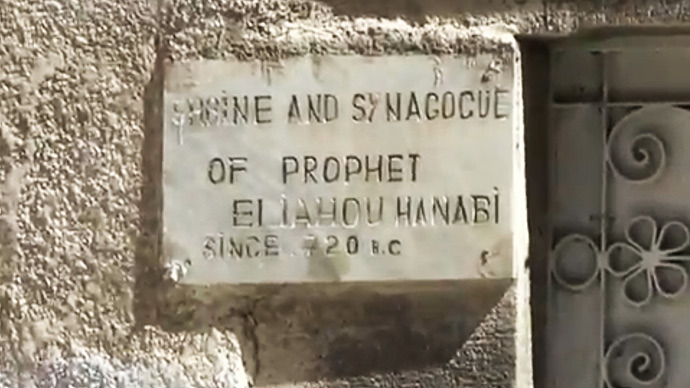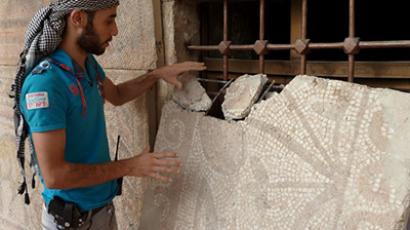2,000-year-old Damascus synagogue destroyed

The holiest Jewish site in Syria – the 2,000-year-old Jobar Synagogue in Damascus – has been looted and burned, and its roof blown off. The Syrian army and rebel forces have both blamed each other for the demolition of the historic landmark.
It is believed that the Jobar Synagogue, one of the world’s
oldest, was built atop a cave where the Prophet Elijah once hid
from persecution. One of the earliest historical mentions of the
synagogue can be found in the Talmud.
According to Israel Radio, the rebels claimed that the Syrian
government looted the synagogue before burning it to the ground.
Meanwhile, the government alleged that the rebels had burned down
the synagogue. It has also been claimed that “Zionist
agents” stole historic artifacts from the holy site as part of
a planned operation, Al-Manar Television reported.
Earlier this year, the Jobar synagogue was damaged by shells
reportedly fired by Syrian government forces. A video uploaded by
the Syrian opposition in early March exposed the damage done to the
structure.
The synagogue is regarded as Syria’s holiest pilgrimage site for
Jews. In the past, the sick were brought to the cavern below the
synagogue and left there alone at night, in hopes that Elisha's
spirit would heal them.
There is an inscription in English at the synagogue: “Shrine and
synagogue of Prophet Eliahou Hanabi since 720 BC.” During the
medieval period, it served a large Jewish community.
In 2011, Syrian President Bashar Assad approved the renovation of
11 synagogues across the country, including the Jobar Synagogue in
Damascus.

Syria is home to six UNESCO world heritage sites: The ruins of
Palmyra, the citadels of Crac des Chevaliers and Qal’at Salah
El-Din, the city of Bosra, its ancient northern villages and the
Old Cities of Damascus and Aleppo.
The 12th-century Crac des Chevaliers fortress, which used to be one
of the most-visited landmarks in Syria before the conflict began,
was seriously damaged by artillery fire as the Syrian army
attempted to clear out a rebel encampment.
Fierce fighting in Damascus and Aleppo has resulted in the
destruction of many historic landmarks; UNESCO has repeatedly
called on the international community to protect Syria's cultural
heritage. Earlier this year, ancient mosaics depicting scenes from
Homer's ‘Odyssey’ were illegally excavated at an archeological site
and smuggled to Lebanon.
And last year, an 8th-century-BC Aramaic gold-plated bronze statue
was stolen from a museum in Hama, which has become a battlefield in
the conflict between the army and rebels. In December 2012, the
statue was put on Interpol’s ‘Most Wanted Works of Art’ poster.
Many Christian churches have been destroyed during the ongoing
conflict in Syria, and Christian minorities are being forced to
flee their homes.
“Our churches have been attacked in all provinces,”Orthodox Metropolitan Bishop Luke told RT. “In
Saidnaya the monastery was under fire, but, thank God, a miracle
happened – the shell landed in the yard, breaking through the wall,
but didn't explode.”
“Everywhere – in Harasta, Arbin, Zabadani, Daraa, Aleppo and
around Damascus, our churches and our people have been attacked.
Our cathedral in Raqqa has been severely damaged,” Bishop Luke
said.














